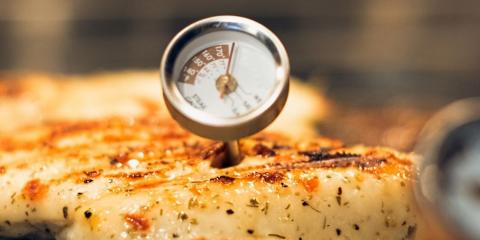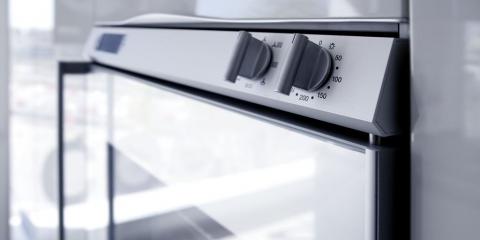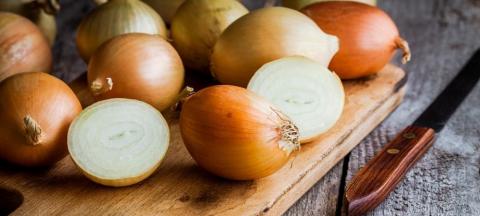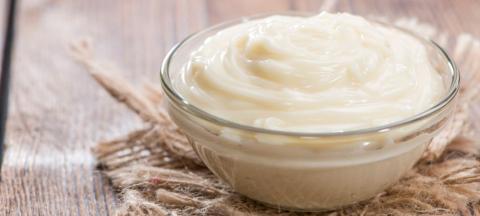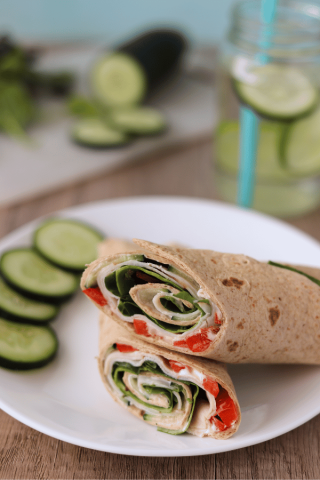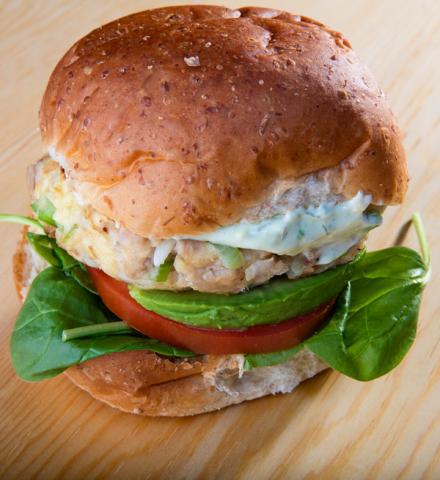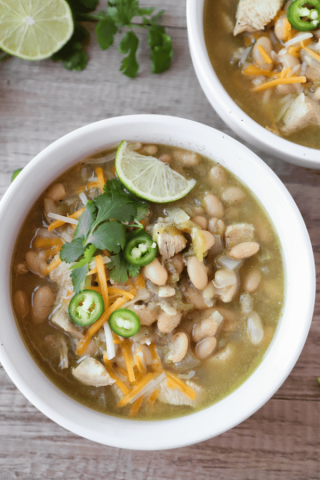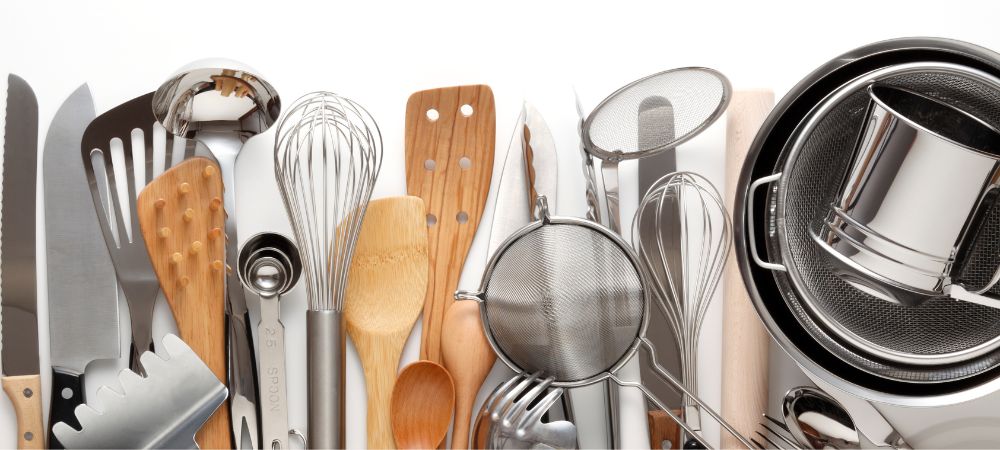
Making meals is a little like making magic. You toss some ingredients together and voila ... they change into muffins or a mixed vegetable medley!
Some days you may wish your magic wand was speedier. That it didn't take quite so long to clean, peel, chop and mix fresh vegetables for a salad. Or measure, mix, beat, blend and cook a casserole.
In search of time-saving kitchen magic, our Nebraska Extension food professionals were asked to share their favorite time-saving kitchen tools. Here are the 30 tools they shared to quicken your kitchen performance:
- Tool 1: A Good Quality, Sharp Chef's Knife - This tool is a must in many cooks' kitchens. Use a chef's knife to quickly chop, cut, slice, dice, and mince fresh produce. Surprisingly, some tasks can be accomplished faster with a chef's knife than with a food processor. To maintain optimal performance, it's important to keep your knife sharp. Check what type of sharpening procedure or device the manufacturer of your knives recommends.
- Tool 2: Kitchen Shears - Sturdy, sharp kitchen shears can perform many tasks, from cutting herbs, bacon, and pizza to trimming dough to deboning chicken and cutting poultry joints. Many are labeled dishwasher safe and will separate for more thorough cleaning. As with any sharp item, use caution. If you wash shears in your dishwasher, place them in a location where they will not bump against other items or cut someone on removal.
- Tool 3: Slow Cooker - There are so many advantages to using a slow cooker. Slow cookers use less electricity than a conventional oven. They cook foods slowly and at a low temperature — between 170°F and 280°F, and the low heat helps less expensive, leaner cuts of meat become tender and shrink less. The direct heat from the pot coupled with the lengthy cooking time effectively destroys bacteria, making the slow cooker a good choice for safely cooking foods.
- Tool 4: A Good Quality Vegetable Peeler - Quickly and evenly remove the outer skin from fruits and vegetables with a sharp, durable vegetable peeler. Many have a sharp, rounded edge at the end to pop out the "eyes" of potatoes.
- Tool 5: Parchment Paper - There are so many uses for parchment paper that make baking, cooking, and clean-up so much easier. Parchment paper is primarily used in baking as a pan liner or to wrap foods in for cooking but can also be used for rolling out cookie dough or pie crust. It can withstand temperatures up to 450 °F but should not be used while broiling.
- Tool 6: Air Fryer - This newer, trendy appliance has many benefits including being energy efficient, easy to use and clean, comes in a variety of sizes, and can speed up the cooking process. Air-fried foods can be healthier than deep-fried foods because they require less oil to produce a similar taste and texture.
- Tool 7: Anything Dishwasher Safe - Check for the magic time-saving words "dishwasher safe" before purchasing an item. Don't buy anything you have to wash by hand until you check to see if there is a comparable dishwasher-safe item from another company. Using the dishwasher saves time and helps ensure kitchen items are thoroughly and safely cleaned. Plus, sticking your utensils in the dishwasher gets them out of sight immediately!
- Tool 8: Food Thermometers - Using a food thermometer is the only way to really know your food is thoroughly cooked, and that it has reached a temperature that will destroy any harmful bacteria. It can also help you save guessing time trying to decide when food is done and prevent overcooking!
- Tool 9: Blender - A blender makes quick work of pureeing ingredients, such as for soups, and is terrific for making smoothies. Purchase a heavy-duty blender if you want to crush ice.
- Tool 10: 1- and 2-Quart Microwave-Safe Glass Batter Bowls/Mixing Cups - Use these multi-talented tools to measure; mix (batters, sauces, and toppings); cook foods in the microwave; and reheat foods you want to pour, such as soups. Many come with plastic covers so you can use them for storage, too!
- Tool 11: Electric Multi-Cooker (such as an Instant Pot®*) - These appliances can be used for pressure cooking, slow-cooking, searing, sautéing, and much more. The pressure-cooking feature allows temperatures above the boiling point of 212°F and causes food to cook more quickly than usual. To save even more time, electric multi-cookers efficiently handle the preparation of frozen foods as well. A pressure cooker is NOT a pressure canner and should not be used to process food for preservation. Frozen foods can be prepared in an electric multi-cooker which can be timesaving as well.
- Tool 12: Heat Resistant Spoon-Shaped Spatulas - Mix, scrape, and stir again with just one utensil right at the stove. Once you experience the convenience, you might find yourself wanting them in various sizes.
- Tool 13: Immersion Blender - An immersion blender works great for pureeing soups in the pot, frothing hot chocolate or making smoothies.
- Tool 14: Multi-Functional Baking Dishes and Mixing Bowls - Save cupboard space and cleaning time by purchasing baking dishes suitable for baking, microwaving, and storing food. Likewise, purchase microwave/oven safe mixing bowls suitable for storage and attractive enough to set on the table! Some baking and mixing dishes come with their own covers, making them especially handy for storing foods. Be sure to follow the directions that come with these dishes and bowls to prevent breakage.
- Tool 15: Food Storage Containers/Bags - Food storage containers come in a variety of shapes, sizes, sets, and materials. Consider how you will be using them before purchasing - will your children be taking them in lunches for school or will they be used in the freezer? Having containers that "nest" together can save space in your kitchen. Reusable storage bags can be cost-effective and environmentally friendly. Consider durability and ease of cleaning when purchasing. Some reusable food storage bags are microwave, oven and dishwasher safe.
- Tool 16: Cookie Dropper - If you bake lots of cookies, use this tool to make more uniform cookies in less time than you can by dropping dough from a spoon. Cookie droppers look like mini ice cream scoops where you push a lever on the handle to push out dough into muffin pans.
- Tool 17: Extra Colanders - If you tend to wash and/or drain a lot of food for meals, an extra colander or two may save you time and help prevent cross-contamination.
- Tool 18: Electric Hand Mixer - An electric hand mixer is easy to use and works great for small jobs that don't require a larger stand mixer. Hand mixers are easily maneuvered around and can be used in almost any mixing bowl.
- Tool 19: Drawer Organizers for Utensils - Who has ever wasted a ton of time looking through the utensil drawer trying to find the right spatula? Having utensils organized saves you time and frustration.
- Tool 20: Food Clips - Plastic clips that snap shut and look like hair barrettes are great for fastening opened bags. Keep a bunch handy in your kitchen for quickly closing bags of frozen vegetables, nuts, etc.
- Tool 21: Flexible Plastic Cutting Boards - Flexible plastic cutting boards are favorites with several people. After cutting vegetables, fruits, or herbs, you easily lift them to pour the contents into whatever bowl or pan you are using. They are also dishwasher safe!
- Tool 22: Garlic Press - This is a tool that can be quicker than chopping garlic into tiny pieces and can help prevent garlicky fingertips. Simply pop a garlic glove into the chamber and squeeze. Look for one that is dishwasher safe.
- Tool 23: Silicone Baking Mat - A silicone baking mat is most often used to line cookie sheets when baking to make clean-up easier and reduce the amount of parchment paper or aluminum foil used. These mats are also great for placing on a countertop to knead bread or roll out cookie dough. Silicone mats are available in various shapes and sizes to fit different sizes of baking pans.
- Tool 24: Jar Opener - If your only jar opener is a flat piece of rubber or you do not have an opener at all, check out the kitchen gadget section at your favorite store. Some of the latest models let you stick the jar lid between two prongs and twist. If you are tired of holding jars under hot water, hitting lids on the counter, or giving up and reaching for a different food, this may be the tool for you.
- Tool 25: Vegetable Chopper - Food choppers can streamline ingredient prep for your favorite recipes. They work well for quickly chopping nuts, fruits, and vegetables.
- Tool 26: Apple Corer/Wedger - Use this tool to quickly core and separate apples and pears into wedges. You can also buy just an apple corer.
- Tool 27: Non-Stick Skillet with Sloping Sides - This type of skillet helps you cook with a very small amount of oil, and clean-up is quick! The sloping sides make it easy to turn and remove food. To protect the nonstick surface, use spatulas, stirring spoons, etc. made for use with this type of coating.
- Tool 28: Box Grater - Box graters are useful in the kitchen for many reasons, including their increased stability and range of functions. Some box graters have several options for different types of shreds and grates that can also be used not only for grating cheese and vegetables but zesting citrus or slicing veggies.
- Tool 29: An Assortment of Whisks - Some whisks are longer and narrower - others are like big balloons. Use the "ballooning-est" ones when you want to beat a lot of air into a mix, such as whipped cream or meringue. Choose whisks with thin and flexible wires for whipping air into batters, and thicker, more rigid wires for thicker mixtures such as brownies.
- Tool 30: Egg/Mushroom Slicer - If you use hard-cooked eggs in salads, etc., you might like one of the small egg slicers with closely spaced wires for making perfect slices. Look for one that is strong enough to slice mushrooms.
*Reference to commercial products or trade names is made with the understanding that no discrimination is intended of those not mentioned and no endorsement by University of Nebraska—Lincoln Extension is implied for those mentioned.
Sources:
Kitchen Thermometers, Food Safety and Inspection Service (FSIS) and United States Department of Agriculture (USDA)
Should I use a wooden cutting board or a plastic one?, United States Department of Agriculture (USDA)
Slow Cookers and Food Safety, Food Safety and Inspection Service (FSIS) and United States Department of Agriculture (USDA)
This article was originally written by Alice Henneman. It was reviewed and updated in 2024.
Tags:
Feedback Form
Feedback Form
If you do not see the article, please scroll up the page.
